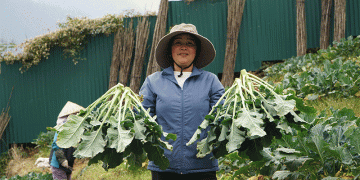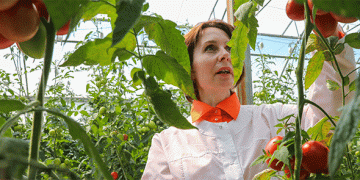Vietnam’s fruit and vegetable exports are on track to set a new record by the end of 2024, driven by substantial growth in markets such as China, the United States, and several European countries. According to the Vietnam Fruit and Vegetable Association (Vinafruit), exports have reached 6.6 billion USD by the end of November, meeting the country’s annual target a month ahead of schedule. This achievement underscores the increasing demand for Vietnamese produce, which is known for its high quality and competitive pricing in international markets.
The primary driver of this growth has been exports to China, which account for an estimated 4.6 billion USD—nearly 70% of Vietnam’s total fruit export value. The demand for Vietnamese fruits such as dragon fruit, mango, longan, lychee, and rambutan continues to rise due to their unique taste and nutritional value. China’s diverse consumer base and preference for tropical fruits have made it a crucial market for Vietnamese exporters.
In addition to China, exports to the Republic of Korea, Germany, Canada, and the US have also seen significant growth. These markets have seen double-digit increases in Vietnamese fruit and vegetable imports, driven by factors such as increasing health awareness and a growing demand for natural, fresh produce. The US, in particular, offers a lucrative market for Vietnamese fruits, given the relatively limited domestic production of tropical varieties. Eight types of fresh Vietnamese fruits, including dragon fruit, mango, longan, lychee, rambutan, star apple, pomelo, and coconut, are now exported to the US, reflecting the expanding market access for Vietnamese agriculture.
The record-setting export numbers reflect Vietnam’s strategic focus on diversification and quality enhancement in production. The government’s efforts to support agribusiness development, including investments in post-harvest technologies and cold storage facilities, have been instrumental in maintaining the quality and shelf-life of exported produce. Additionally, the adoption of modern agricultural practices and standards, such as Global GAP and HACCP, has helped ensure that Vietnamese fruits meet the stringent requirements of international markets.
Looking ahead, Vietnam’s fruit and vegetable sector is expected to continue its growth trajectory, with potential exports reaching 7 billion USD, or even 7.2 billion USD by the end of 2024. This growth will be driven by expanding market access, increased investment in agricultural technologies, and continued efforts to meet international standards. The Vietnamese government and industry stakeholders remain committed to improving agricultural practices and expanding market share globally.
Vietnam’s success in the fruit and vegetable export market highlights the country’s ability to meet international demand through strategic investments in quality, technology, and market access. The record-setting export numbers demonstrate the global competitiveness of Vietnamese agriculture and the potential for continued growth in this sector. As the country continues to innovate and adapt to international standards, it will be well positioned to maintain its position as a key player in the global fruit and vegetable market.































